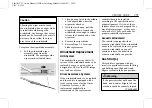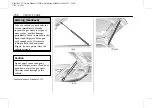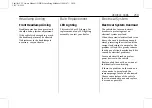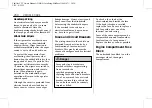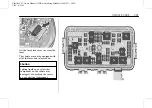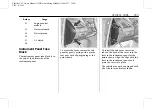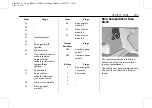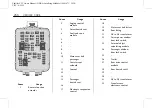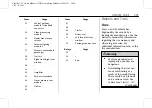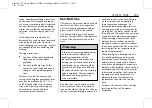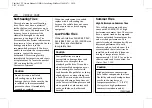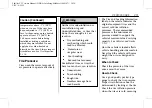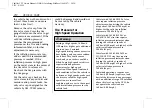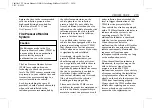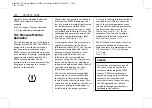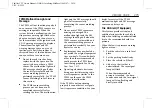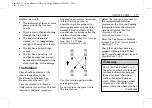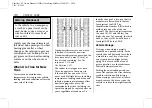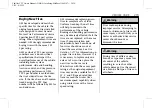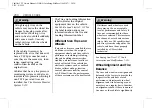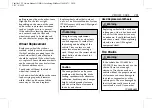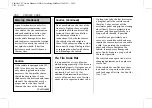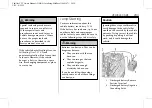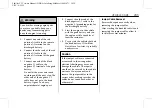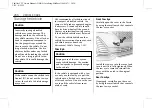
Cadillac CT5 Owner Manual (GMNA-Localizing-MidEast-13060107) - 2020 -
CRC - 8/29/19
VEHICLE CARE
271
Caution (Continued)
temperatures above
−
7 °C (20 °F)
when not in use. If the tires have
been subjected to
−
7 °C (20 °F) or
less, let them warm up in a heated
space to at least 5 °C (40 °F) for
24 hours or more before being
installed or driving a vehicle on
which they are installed. Do not
apply heat or blow heated air
directly on the tires. Always inspect
tires before use. See
Tire Pressure
Tires need the correct amount of
air pressure to operate effectively.
{
Warning
Neither tire underinflation nor
overinflation is good.
Underinflated tires, or tires that
do not have enough air, can
result in:
.
Tire overloading and
overheating which could
lead to a blowout.
.
Premature or
irregular wear.
.
Poor handling.
.
Reduced fuel economy.
Overinflated tires, or tires that
have too much air, can result in:
.
Unusual wear.
.
Poor handling.
.
Rough ride.
.
Needless damage from
road hazards.
The Tire and Loading Information
label on the vehicle indicates the
original equipment tires and the
correct cold tire inflation
pressures. The recommended
pressure is the minimum air
pressure needed to support the
vehicle's maximum load carrying
capacity. See
.
How the vehicle is loaded affects
vehicle handling and ride comfort.
Never load the vehicle with more
weight than it was designed to
carry.
When to Check
Check the pressure of the tires
once a month or more.
How to Check
Use a good quality pocket-type
gauge to check the tire pressure.
Proper tire inflation cannot be
determined by looking at the tire.
Check the tire inflation pressure
when the tires are cold, meaning

